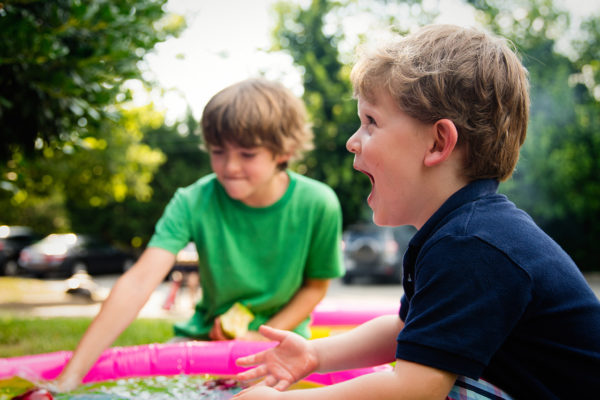As a parent searching for supports for your disruptive child there are so many potential treatment options out there. How can you possibly know which are legitimate? Which ones will best help your child? What’s with all of the jargon? Here are a few things that a true behaviorist, whether ABA or PCIT-certified will all follow:
- Positive attention > Negative attention.
The research shows that giving positive attention, rather than negative attention is more effective in changing behavior. The fact is, kids don’t really care if the attention they get is positive or negative, they just want adult attention! Usually, the kids who get the most adult attention are the ones who engage in more negative behavior. They are the kids who are constantly being told “no,” “stop,” “get off there,” “leave her alone,” and “you know I hate when you whine!” Yet, these behaviors are still happening and maybe even getting worse. Kids start to figure out that more extreme behavior will get a quicker and more attentive response. Meanwhile, the kids who are respectful, following directions, and speaking kindly go completely under the radar.
Instead of focusing on the negative, focus on the positive behaviors a child is already engaging in and work on growing them. Ignore the minor annoying behaviors and praise the child for a positive behavior the second the negative behavior stops. Make your positive attention count with labeled praise. By telling your child exactly what you like, they will feel recognized and will be more likely to do that behavior again in the future. “Thanks for sharing with me” goes a lot further than “thanks!” The former tells a child exactly what to do again to get that attention from you. Make positive attention your currency so that your child seeks it and the negative attention loses its value.
- The function of the behavior always matters.
Escape. Attention. Tangible Items. Sensory Seeking.
While there are a million different behaviors a child can engage in, there are only four functions of behavior. Understanding why your child is engaging in a behavior will help you to address the problem. By identifying what leads up to the behavior and how it is reinforced after, you will gain insight into the reason why it is occurring. To address a problematic behavior, you need to make sure the new behavior you are introducing fulfills the same function. If your child is trying to escape from a frustrating task, breaking it down to make it more manageable while still having them feel that frustration will help them to be more successful each time. With each new frustrating task, you can work towards doing more, but remember to give that eventual break from the frustration if your child is needing that escape.
- Extinction bursts are VERY real.
An extinction burst means that when we are doing something to get rid of an unwanted behavior it will increase before it decreases. For minor attention-seeking behaviors, ignoring is often your best bet to reduce the behavior, but remember that the behavior will get worse before it gets better. Kids are smart and they have a lot of experience with getting what they want from adults, so our smart kids are going to try more extreme behavior before giving up. They owe it to themselves! If you begin ignoring a behavior, know that it will likely get worse. While your child is reacting, try to think about the positive opposite of their behavior and have it ready for the moment they engage in it. For example, if your child is crying loudly, be ready to praise for calming down at the first moment your child calms themselves at all. If you give in to a behavior after your child escalates, expect the extinction burst to be worse next time. Smart kids will try again to get what they want, especially if it worked before! Be strong and wait out the storm, after the behavior gets much worse, it typically gets much better.
- Kids need to practice the hard stuff.
Prevention can be extraordinarily helpful and you know your child best to prevent certain behaviors. Sometimes, prevention is exactly what you need to get through a family outing, birthday party, or getting ready for school. However, if we are always preventing a negative experience, kids will never learn how to manage their reactions. Set your child up for success by giving them strategies or promoting positive behaviors within a negative experience to show that they can tolerate these experiences and manage them more appropriately. Practice is an important step towards mastery, so give your child opportunities to practice what is hard, just make sure you have the time and energy to support them in the moment too!
- Consistency, consistency, consistency.
Kids and adults learn through practice. The more consistent you are with providing attention, ignoring, and even setting limits, the more consistently your child will respond. It took time to establish negative behavior patterns and it will take time to change those behaviors. The more you stick with new strategies, the more you will get out of them.
- We can’t control everything!
Adults can try to prevent certain behaviors, provide consequences, or ignore, and sometimes, it will work awesomely well! Other times, everything will feel like it’s going wrong. You will ignore your child and every other child on the playground will be staring. You will tell your child they can’t have dessert because of a negative behavior and the babysitter gives it to him anyway. Needless to say, try your best to be consistent and recognize when your response will work and when it will not. Maybe leaving the park in silence is the best way to ignore since you can’t control everyone else around you.









